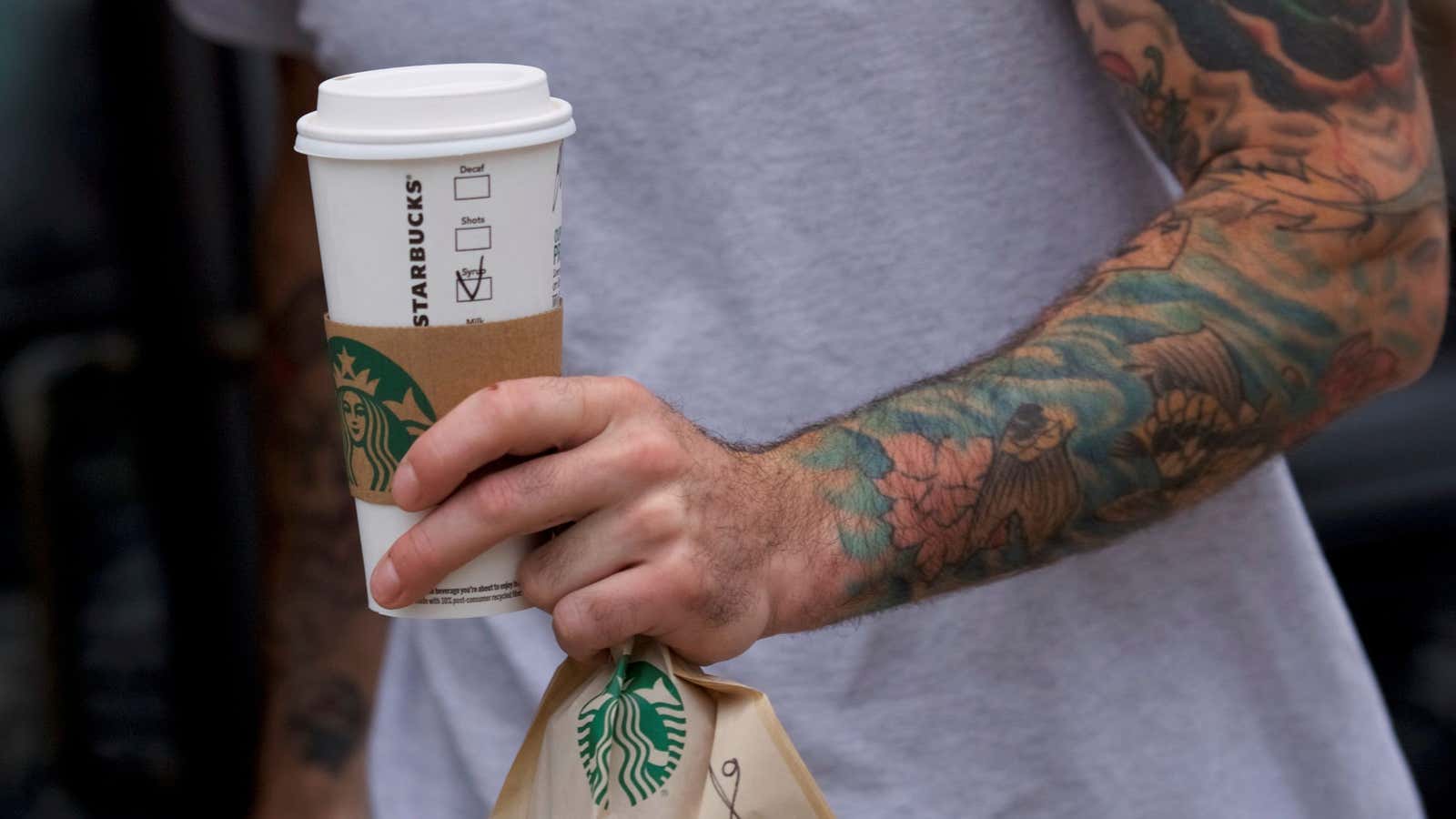In 2000, Starbucks’ arrival in Beijing’s revered Forbidden City was described by the New York Times as “an emblem of the extremes to which globalization has reached.”
Little did we know of extremes then.
Last week, on its fiscal first-quarter earnings call, executives provided an updated picture of Starbucks in China. Today, the green logo hangs in more than 3,600 shops, in 150 Chinese cities.
CEO Kevin Johnson said Starbucks’ store base grew 18% there in 2018, and the company moved into 10 more cities in the first quarter alone. Johnson also talked up the company’s budding delivery program at 2,000 shops in China, and its new virtual store on Alibaba, which will give Starbucks access to 600 million consumers.
The chain is expanding elsewhere in the world, too. In December, Starbucks announced plans to continue expanding at a rate of 6- 7% globally, and 3-4% (or about 550 stores per year) in the US.
If you feel like you already can’t escape the green mermaid’s empty gaze, even when crisscrossing the world on business, there’s a good reason for that. At this moment, the coffee giant runs 29,865 stores in 78 markets around the world, including both company-operated retail outlets and licensed shops and kiosks (like those you see in grocery stores, auto dealerships, and airports).
Here’s a look at how many places Starbucks whips up lattes and fraps by market:
The only big region where Starbucks has been struggling, perhaps not surprisingly, is in Europe, where a strong coffee culture existed before the American chain arrived. Last year, a partner company, Mexico-based Alsea, which runs 900 Starbucks in Latin America, purchased dozens of stores in European markets as part of a corporate restructuring meant to boost growth in that region.
While Starbucks is still setting up new barista bars and drive-thrus in most other places, its expansion plans are actually scaled back compared to what founder and former CEO Howard Schultz had imagined before stepping down as executive chairman last summer.
Schultz had envisioned opening 1,000 high-end Starbucks Reserve stores, selling Starbucks’ most premium coffee, without a hint of mid-market green in sight. He also had dreams of building 30 upmarket, sprawling Reserve Roastery stores in global hubs, where baristas in fedoras might boil the water for your coffee over a halogen lamp, while a bartender mixes exotic coffee-themed cocktails. Rather an intimate coffeehouse experience, these mini-theme parks promise theatrics.
So far, four Roastery shops have opened, including one in Shanghai that’s 30,000 square feet and another that’s 23,000 square feet in Manhattan. The Wall Street Journal recently noted that Johnson is being vague about how many more of these sites will materialize, though Tokyo and Chicago developments are already underway. (They were mentioned to analysts in passing on last week’s earnings call.)
The new man in the corner office is said to be a disciplined realist, a seeming departure from his predecessor, who has made waves with the insinuation that making Americanos a global phenomenon qualifies him to run America.
For what it’s worth, most analysts believe Johnson’s streamlining is paying off. Thanks largely to a strong holiday season and increased same-store sales overall, its first quarter earnings beat expectations, with revenue rising 9% to reach $6.63 billion. Earnings per share, adjusted for income-tax gains, landed at 68 cents, while analysts were predicting 65 cents.
The stock price jumped 3% in premarket trading the morning after the earnings call. Now, hovering around $67 per share, it’s holding onto those gains.
